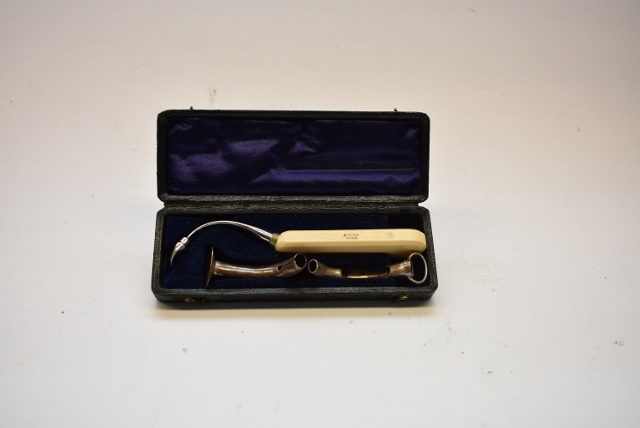Those of us who harbor a deep admiration for antique clocks and barometers can’t help but marvel at the craftsmanship, intricacy, and historical narratives encapsulated in these vintage pieces. Beyond the realms of timekeeping and atmospheric prediction, there’s another fascinating facet of the antique world that captivates us – medical instruments. These timeless relics offer a glimpse into the evolution of medicine, standing as a testament to the genesis of modern medical practices, and continually sparking the curiosity of enthusiasts around the globe.
The initial epoch of medical instruments takes us back to the dawn of civilization itself. Prehistoric tools such as shards of flint for surgery and carved bone needles for suturing wounds indicate our ancestors’ instinctive drive for healing. The Egyptians, the architects of some of the earliest known medical texts, fashioned instruments from bronze, including scalpels, forceps, and specula. These tools underpinned the foundational medical treatments, paving the way for more sophisticated advancements.
With the progression of time and the advent of the Age of Enlightenment, we started witnessing the first revolution in medical instrument designs. The 18th century brought forth innovative tools like the monaural stethoscope by French physician René Laennec. Made of wood, this instrument allowed doctors to listen to patients’ heartbeats without the potentially uncomfortable direct contact.
The Victorian era marked a particularly dynamic time in the evolution of medical instruments. The rapid expansion of scientific knowledge paralleled the industrial revolution, propelling an explosion in medical device innovation. The hypodermic syringe, invented in 1853 by Alexander Wood, transformed the administration of medicine. In the same era, advancements in materials science allowed for sterilizable, durable instruments made from stainless steel.

Tools of the 20th Century and Beyond
The 20th century ushered in a wave of technological breakthroughs, reshaping the face of medical instruments. From Wilhelm Conrad Roentgen’s X-Ray machine in 1895, which opened up a previously invisible world, to the invention of the heart-lung machine in the 1950s, facilitating complex cardiac surgeries, the field witnessed a shift from invasive procedures to non-invasive techniques.
These advancements were further amplified with the development of electronic and digital technologies. The latter half of the 20th century and early 21st century gave us sophisticated equipment such as ultrasound machines, MRI scanners, and robotic surgical tools.
Collecting Antique Medical Instruments
Collecting antique medical instruments and specifically antique surgical instruments has become a fascinating hobby for many, with certain pieces carrying considerable value. From beautifully crafted brass microscopes of the 19th century to the ornate dental tools from the Victorian era, the range of instruments available is expansive.
To begin a collection, it’s beneficial to familiarize oneself with the key periods of medical history and the corresponding tools. Visit museums, browse auction catalogs, and read pertinent literature. Always verify the authenticity of a piece and its provenance if possible. But most importantly, like any antique, the piece should resonate with you personally.
Just like our cherished antique clocks and barometers, these instruments hold more than just historical value; they are tactile pieces of our human story, representing our enduring quest for understanding and healing. They stand testament to the evolution of medicine, embodying the craftsmanship, ingenuity, and dedication of the generations that came before us.

In a broader sense, our fascination with antiques, be it clocks, barometers, or medical instruments, stems from our love for history. Each piece, each instrument, tells its own story – of a time gone by, of human resilience, and of our ceaseless endeavor to improve our circumstances. Whether we collect to appreciate the beauty, own a piece of history, or simply invest, these timeless artifacts always have a fascinating tale to tell. As collectors, we are merely the latest custodians in the enduring journey of these historical treasures.
